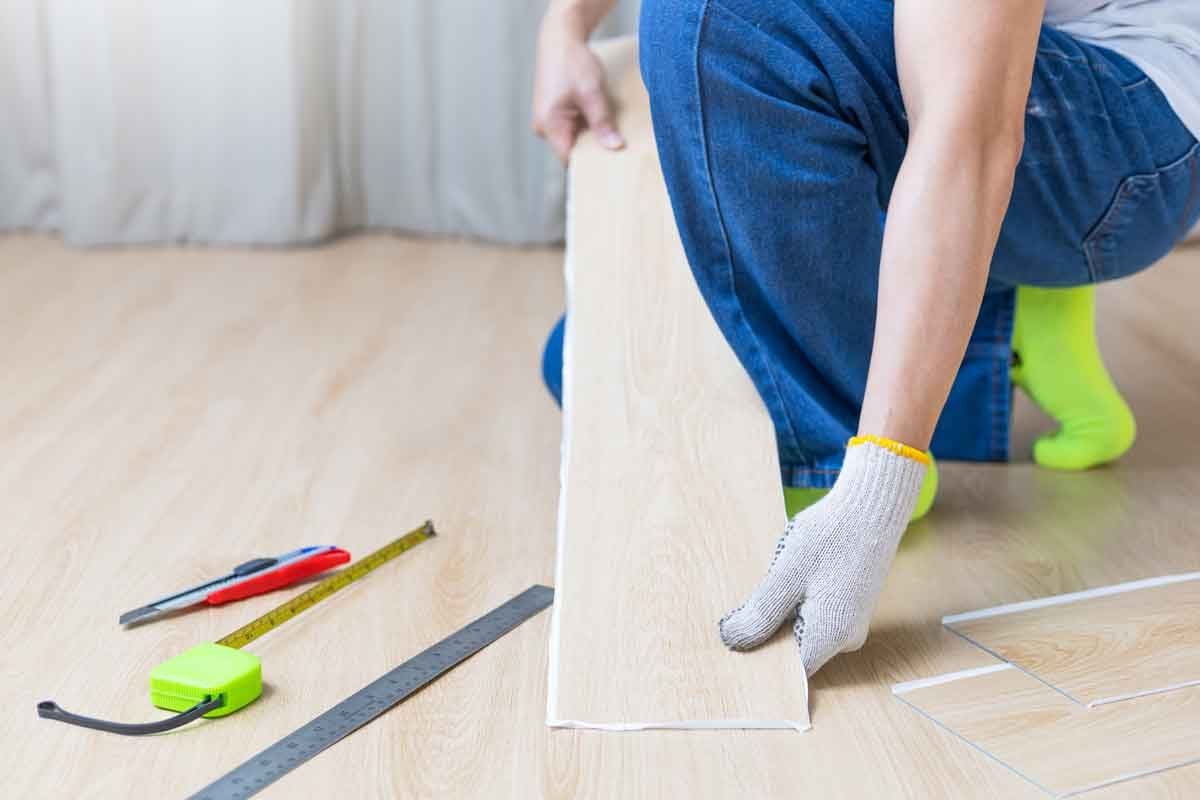This temporary flooring option is an inexpensive alternative to tile or hardwood.
Our editors and experts handpick every product we feature. We may earn a commission from your purchases.Learn more.


This temporary flooring option is an inexpensive alternative to tile or hardwood.
Our editors and experts handpick every product we feature. We may earn a commission from your purchases.Learn more.
Do you want endless style choices without the high price? Peel and stick flooring might be worth a try. It’s a quick, easy and low-commitment way to give your floors a makeover. Since it’s inexpensive and temporary, it’s ideal for rental units and low-budget remodels.
Here’s what experts say you need to know about this flooring alternative.
On This Page
Peel and stick flooring is exactly what it sounds like. It sticks directly to the floor for fast and easy installation.
“Peel and stick flooring is similar in concept to peel and stick wallpaper, in that it uses an adhesive backing to stick directly onto a surface,” says Kim Abrams, CEO of Abrams Roofing. It comes in many styles and materials to suit any décor.
Peel and stick flooring is made of vinyl about 0.3 to 0.5 mm thick, according to Sean Chapman, founder of Tools’n’Goods. It comes in various colors and textures and can even mimic natural wood. Wood-look peel and stick flooring is trendy now, but stone tiles and patterned tiles are also common. You may see peel and stick floor tiles on walls as well.
Peel and stick flooring differs from other types of flooring in three major ways: cost, installation and longevity.
Peel and stick flooring tends to be the least expensive option. Chapman says you can expect to spend “$0.50 to $2 per square foot with an average cost of $1 per square foot,” whereas hardwood flooring costs $5 to $12 per square foot. You’ll also save on installation costs if you go the DIY route.
“Unlike other types of flooring, vinyl stick flooring doesn’t require an underlayment,” Chapman says. “This makes DIY installation much easier!” Any level, solid surface like concrete or subflooring can hold peel and stick flooring. Carpet, on the other hand, needs padding beneath it.
Peel and stick flooring doesn’t last as long as other flooring options. Though Abrams says you shouldn’t expect it to last longer than five years, Chapman says high-quality products may last up to 25 years under ideal conditions. Hardwood, by comparison, can last over a century.
The good news? When peel and stick flooring wears out, it’s easy to remove and replace.
Peel and stick flooring is an easy DIY job. That’s its main draw. To install, Abrams says you’ll need a tape measure, putty knife, pencil, clear ruler (or straightedge), utility knife, scrap wood, hammer and stepladder.
Once you have your tools and flooring, Abrams offers these installation tips:
Installation couldn’t be simpler: Peel off the backing and stick the pieces one by one. “The best technique is to peel off a small part of backing on the edge, stick it to the right place, and then slowly peel off the rest while pressing on the surface with a plastic spatula,” Chapman says.
You can also remove peel and stick flooring yourself. This might be trickier depending on the type of flooring. To remove peel and stick flooring, Abrams says you’ll need adhesive remover, putty knives, pry bar and pliers. Chapman also recommends a multitool scraper.
Whatever tools you use, the removal process is the same. Get under the edge of a tile and pry it off, then repeat with the next tile. Before you begin, Abrams says, “Consult the manufacturer to ensure that the glue is free of lead and contains no urea formaldehyde, which can emit harsh fumes.”